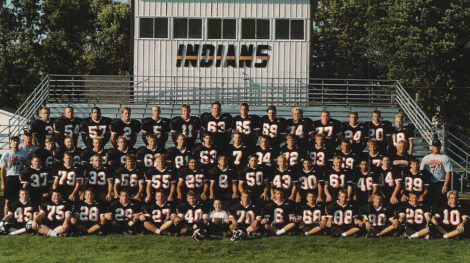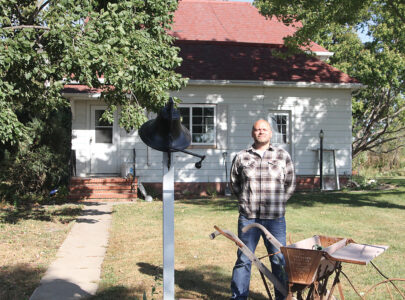Ornate Mt. Washington Glass products one-of-a-kind
The Mt. Washington Glass Company was one of the most important American art glass makers of the 19th century. The company started in 1837 as the Mt. Washington Glass Works in South Boston. Later, it moved to New Bedford, Massachusetts, where it operated until it merged with the Pairpoint Manufacturing Co. in 1894.
While it was in operation, Mt. Washington made art glass in many colors and finishes, like two-tone Amberina and Burmese, often embellished with gold and enamel. Its crown jewel may be the appropriately named Royal Flemish, which features panels of multiple colors outlined in gold. It was made by 1889, but the company did not patent it until 1894. Maroon is often one of the featured colors; shades of peach, pink, yellow, cream, and translucent white also appear.
The glass is further embellished with designs like flying birds, flowers, or mythical creatures. Decorations were meant to evoke the exotic or antique. Royal Flemish was rarely marked, unlike some Mt. Washington glass lines, which doesn’t worry collectors; it is usually unmistakable.
Making Royal Flemish glass was a complicated process, so it was not copied by other companies. Even today, it has not been reproduced. This makes it all the more valuable. The covered jar shown here, decorated with medallions inspired by ancient Greek and Roman coins, sold for $2,280 at Woody Auction.
* * *
Q: I bought a Japanese woodblock print at an estate sale. There is a handwritten note on the back that reads “Framed June 1962.” I like the print, but I do not know much about this category of art. Because the marks are in Japanese, it has not been easy to find much about them through an Internet search. How can I find out if it is an old print by a known artist and what it may be worth?
A: Japanese woodblock prints have been popular collectibles for centuries. They became available in the West in the late 19th century. Generally, if you have a Japanese print and want to find out more information or a value, it is worth contacting an expert if the print is over 30 years old. If yours was framed in the 1960s, it certainly qualifies. If there is a museum in your area with a collection of Asian art, they may be able to help you identify your print, the artist, and its age, but not its value. Remember that prints, including Japanese woodblock prints, can be reprinted over many years. Look for books on Japanese prints, also called ukiyo-e, at your library. Many auction houses and dealers that sell artwork deal in Japanese prints and may be able to help you evaluate yours. There are some auction houses like the Ukiyo-e Gallery that specialize in them.
* * *
Q: There is an unusual furniture piece that has been in my family for over 40 years. We were always told it was French, maybe from the 15th century, and called a lavabo. It is a wooden cabinet with a metal tank on the back of the top level, a metal basin on the lower level, and a cupboard with a shelf underneath. There is a key for the cupboard door. I’m not an expert, but the nails don’t look to be machine-made. I have looked at every furniture book in the library system and cannot identify it precisely. There are no marks on the metal or labels on the wood. Do you know what it is, how old it might be, and what it is worth?
A: A lavabo is a basin for washing one’s hands. There are many possible designs, from simple basins to elaborate styles resembling fountains. Lavabos like yours have a metal basin built into a wooden cabinet with a tank to dispense water on the upper level. They were in use by the 18th century, so yours is newer than you have been led to believe. They are especially popular in French Provincial furniture of the 18th and 19th centuries. Oak and walnut are common woods, and the metal tank and basin are usually pewter. They usually sell for about $500-$1,000.
A note about nails in antique furniture: The first machine-cut nails were made in the early 19th century, but they still had hand-hammered heads. The uniform machine-made nail we know today was made by the 1880s. However, nails are still being made by hand, often for repairing or restoring antique furniture. Handmade nails on their own may not be enough to confirm the date of an antique piece.
* * *
TIP: Never use hot or cold water on glass. Use dishwashing liquid, a soft toothbrush, and warm water. Rinse, then dry with a terrycloth towel.
* * *
Kovels answers readers’ questions sent to the column. Send a letter with one question describing the size, material (glass, pottery) and what you know about the item. Include only two pictures, the object and a closeup of any marks or damage. Be sure your name and return address are included. By sending a question, you give full permission for use in any Kovel product. Names, addresses or email addresses will not be published. We do not guarantee the return of photographs, but if a stamped envelope is included, we will try. Questions that are answered will appear in Kovels Publications. Write to Kovels, King Features Syndicate, 300 W. 57th Street, 41st Floor, New York, NY 10019, or email us at collectorsgallery@kovels.com.
* * *
CURRENT PRICES
Current prices are recorded from antiques shows, flea markets, sales and auctions throughout the United States. Prices vary in different locations because of local economic conditions.
Doll, Mattel, Baby’s Hungry!, plastic, blond wig, blue side-glancing eyes, pink bonnet and dress, battery pack, bottles, plate, spoon, box, c. 1970, box 18 inches, $25.
Carnival glass, Harvest Grape, compote, marigold, scalloped rim, flared base, Indiana, 1960s, 8 1/2 inches, $30.
Furniture, table, rosewood, octagonal top, ebony stringing, inlaid center medallion, mother-of-pearl, X-shape stretcher, caster feet, 28 1/2 x 32 1/2 inches, $65.
Textile, piano shawl, sky blue, ribbon, macrame border, diamond lattice, fringe, hand knotted, 1920s, 105 x 39 inches, $115





